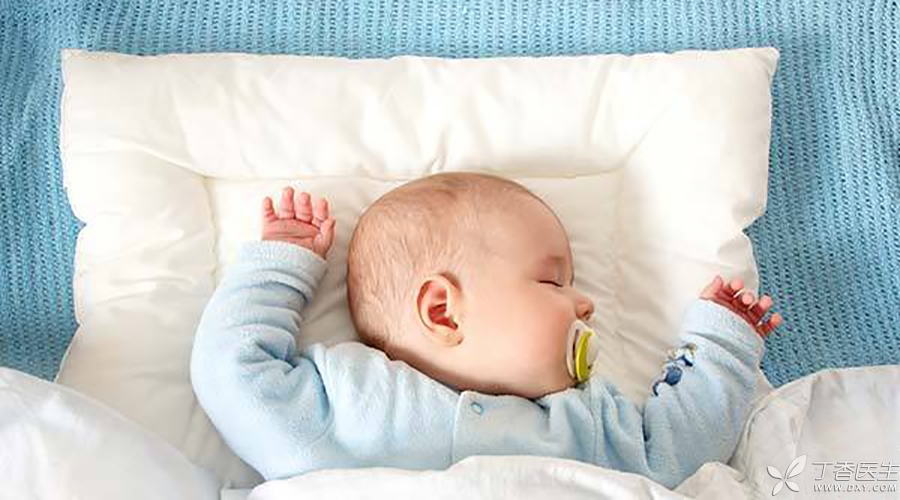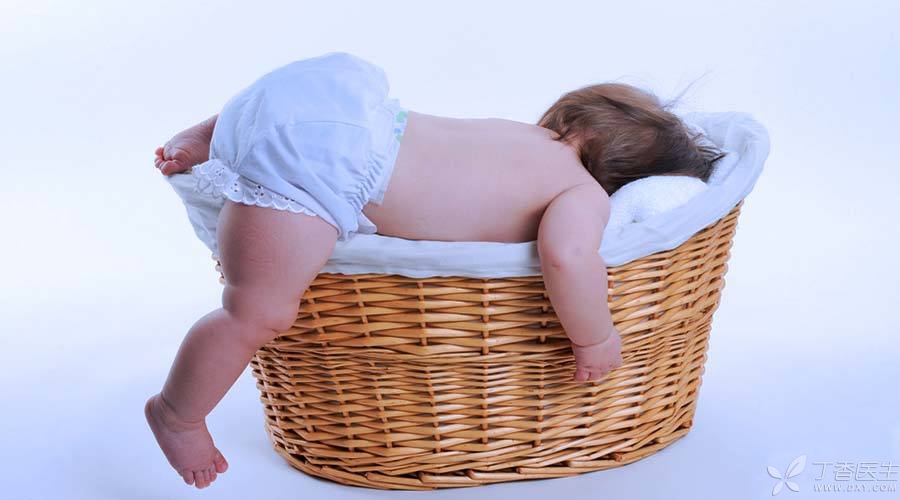
There is a folk custom in our country that when the child is full moon, the elders will give the doll a tiger head pillow, implying good luck and peace, and eliminating disasters and difficulties for the child. Although the tiger head pillow has a good moral, it is actually useless, because the baby of small months does not need what pillows at all.
Let’s talk about the baby’s pillow.
It is not acceptable to use it too early.
The main function of the pillow is to make the baby sleep more comfortably. The ideal pillow should be adapted to the baby’s shoulder width and neck curvature, so that the neck muscles are in a relaxed state and can be fully rested during sleep.
Looking at the human body from the side, the normal spine has four bends [1]. However, when the baby was born, the spine was straight and did not bend, only slightly kyphosis [2]. About 3 months after the baby was born, the neck spine began to protrude with the appearance of the head-up movement. This is the first bending of the spine, also known as [neck curvature], which can support the baby to raise his head [2].
For babies under 3 months old, there has been no neck curvature. At this time, whether the baby is lying on his back or on his side, his head and body are on the same horizontal line, and he does not need a pillow, which will make him uncomfortable.
The texture is too soft to be acceptable.
From a safety point of view, pillows that are too soft may become [invisible killers] of babies.
The American Academy of Pediatrics (AAP) does not recommend using too soft items for infants, including pillows, scarves, toys and too soft mattresses, water beds, sofas, etc.
Too soft articles are easy to get the baby’s face into it, causing fatal asphyxia and increasing the risk of sudden infant death syndrome [3].
How old can babies use pillows?
On this point, the American Academy of Pediatrics (AAP) does not have a clear recommendation time, nor does China have relevant guidelines.
Generally speaking, babies after the age of 1 can start using pillows.
However, pillows should not be used casually, but should be selected and replaced according to the baby’s development status. Don’t use adult pillows for your baby from the beginning, nor can you sleep from childhood to adulthood with one pillow.

How to choose pillows for your baby?
Pillows are small and safety is big. Parents should be cautious, cautious and cautious when choosing pillows for their babies. The general principles for choosing pillows for babies are: appropriate height, reasonable width and length, moderate hardness, comfortable fabric and safe pillow core.
1. Appropriate height
The height of the pillow should be adapted to the baby’s neck curvature, etc. The best use effect is that the baby’s head and body can be on the same horizontal line after using the pillow.
The height of the pillow should be adjusted according to the baby’s development, starting from a height of about 3 cm, and slowly adjusting to 6 ~ 9 cm (school age), which can better support the cervical spine, allow the neck muscles to relax naturally, and improve sleep quality.
The pillow is too high and the neck is too bent, which may cause tracheal obstruction and laborious breathing in the short term. In the long run, it may lead to hunchback, oblique shoulder and other deformities. The pillow is too low to support the cervical spine, the head is too backward or skewed, and the neck muscles cannot rest because they are in a [tense] state.
Parents should pay attention to the development of the baby. If the baby’s head and shoulders are completely out of line when sleeping on the side, consider changing pillows.
2. Reasonable width and length
The width of the pillow should be equivalent to the length of the baby’s head. The length of the pillow should be greater than the width of the baby’s shoulders to prevent the baby’s side head from falling off the pillow.
3. Moderate hardness and softness
As mentioned earlier, pillows are too soft, which may cause the baby to suffocate. However, long-term use of hard pillows is more likely to deform the baby’s relatively soft skull, resulting in flat head, partial face and other deformities.
To judge whether the hardness and softness are appropriate, you can put the baby’s head on the pillow for observation. If appropriate, the baby’s head will naturally cling to the pillow and will not sink too deeply (sink more than 3 cm).
If the pillow cannot cling to the baby’s head and does not sink obviously, it means it is too hard. If the baby’s head is completely trapped in the pillow, it means it is too soft.
4. Comfortable fabric
The fabric of pillowcase and pillow towel should be comfortable, preferably soft pure cotton cloth. The best color is light, which is convenient for parents to know to clean in time.
5. Fill in security
There are many pillow cores [with Chinese characteristics] in our country, including not only mung beans, wheat husk, sorghum, tea and other foods, but also silkworm excrement, cassia seed, chrysanthemum, mulberry leaves and other Chinese herbal medicines and some miscellaneous things.
When choosing a pillow core for your baby, you should not only consider good air permeability, good hygroscopicity (not easy to mold and germinate), moderate hardness, light weight and easy cleaning, but also consider safety. You should choose materials that have no irritating taste, are non-toxic and harmless, and have low allergy possibility.
Parents can choose pillow cores made of pure cotton, kapok, memory cotton (slow rebound sponge) and other materials. Pillow cores made of foam plastic, eye fiber, silk cotton, down (such as duck down, etc.), chemical fiber, space cotton and other materials are too soft or sensitized and are not recommended. Rice, silkworm excrement, tea leaves, various beans, etc. may mold and germinate, and are not suitable for use. As for the high-quality latex pillow on the market, if the hardness and high width can meet the requirements, and will not lead to baby allergy, you can consider using it.
Precautions
1. Pillows alone cannot sleep well on the head shape.
The function of pillows is to make sleeping posture more comfortable. Don’t be superstitious about using some kind of pillow to fix or correct the head shape.
Pillows cannot determine the head shape, but the correct sleeping position is more important. The once popular side pillow has been warned by the Consumer Goods Safety Commission (CPSC) and the Food and Drug Administration (FDA) not to use it as early as a few years ago because it may cause suffocation and sudden death of babies.
2. No special health pillow is needed.
Don’t blindly believe in the so-called [high-tech] health pillow, just follow the purchase principle mentioned earlier. Follow the trend to buy, but may encounter fake and inferior products, with potential safety hazards.
3. Change pillows frequently
The baby’s metabolism is vigorous, and it is easy to soak the pillow when sleeping. In addition, milk overflow, saliva flow and dandruff fall off easily make the pillow a [hotbed] for pathogenic microorganisms, mites, dust, etc. It not only emits bad smell, but also may induce allergic rhinitis, bronchial asthma, insect bite dermatitis, eczema, etc.
Prepare at least double pillow towels, pillow cases and pillow cores, preferably once a week (scalding with hot water above 55 ℃), and dry or dry in the sun. After drying, pay attention to beating to remove dead mites and allergens.
